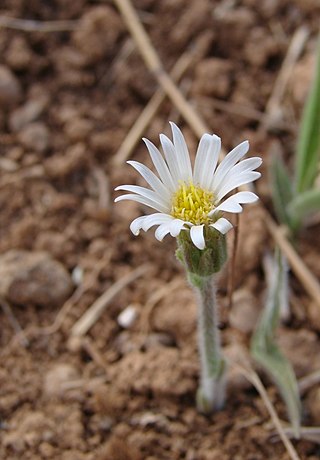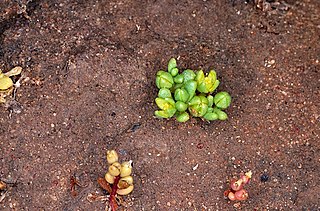
Ochnaceae is a family of flowering plants in the order Malpighiales. In the APG III system of classification of flowering plants, Ochnaceae is defined broadly, to include about 550 species, and encompasses what some taxonomists have treated as the separate families Medusagynaceae and Quiinaceae. In a phylogenetic study that was published in 2014, Ochnaceae was recognized in the broad sense, but two works published after APG III have accepted the small families Medusagynaceae and Quiinaceae. These have not been accepted by APG IV (2016).

Ferdinand Albin Pax was a German botanist specializing in spermatophytes. A collaborator of Adolf Engler, he wrote several monographs and described several species of plants and animals from Silesia and the Carpathians. He was a professor at Wrocław University from 1893. His son Ferdinand Albert Pax (1885–1964) was a noted zoologist.

Heinrich Gustav Adolf Engler was a German botanist. He is notable for his work on plant taxonomy and phytogeography, such as Die natürlichen Pflanzenfamilien, edited with Karl A. E. von Prantl.

Karl Moritz Schumann was a German botanist.
One of the prime systems of plant taxonomy, the Engler system was devised by Adolf Engler (1844–1930), and is featured in two major taxonomic texts he authored or co-authored. His influence is reflected in the use of the terms "Engler School" and "Engler Era". Engler's starting point was that of Eichler who had been the first to use phylogenetic principles, although Engler himself did not think that he was.

Die Natürlichen Pflanzenfamilien (1887–1915) by Adolf Engler (1844–1930) and Karl Anton Prantl is a complete revision of plant families down to generic level and often even further. As such it forms part of the Engler system of plant taxonomy.
Viktor Ferdinand Brotherus, Finnish botanist who studied the mosses (Bryophyta), best known for authoring the treatment of 'Musci' in Engler and Prantl's Die Naturlichen Pflanzenfamilien.
Karl August Otto Hoffmann was a German botanist and a high school teacher in Berlin. Author of Sertum plantarum madagascariensium, the genus Hoffmanniella in the family Asteraceae was named after him by Rudolf Schlechter. The plant genus of Hoffmannanthus (also in the family of Asteraceae was named after him in 2014.
Philyrophyllum is a genus of African plants in the family Asteraceae.

Trichospira is a genus of flowering plants in the tribe Vernonieae within the family Asteraceae.
Triplocephalum is a genus of flowering plants in the tribe Inuleae within the family Asteraceae.
Msuata is a genus of flowering plants in the tribe Vernonieae within the family Asteraceae.
Anton Heimerl was an Austrian botanist.
Ernst Georg Pritzel was a German botanist.

The Lilioideae are a subfamily of monocotyledonous perennial, herbaceous mainly bulbous flowering plants in the lily family, Liliaceae. They are found predominantly in the temperate and colder regions of the Northern Hemisphere, particularly East Asia and North America. The subfamily includes two tribes. They are of economic importance, particularly the lilies and tulips.

Murdannia spirata, common name Asiatic dewflower, is a tropical plant species native to China, India, Southeast Asia and the islands of the Pacific. It is now also naturalized in Florida, first collected there from the wild in 1965. In Asia, it is found in forests and in wet wastelands, often along streams. In Florida, it has been collected from palm hummocks and marshes in and just north of the Everglades.
Myriopteron is a species of plants in the family Apocynaceae first described as a genus in 1844. It contains only one known species, Myriopteron extensum, native to Southeast Asia, India, and southern China. It can be found in Bangladesh.

Inulopsis is a genus of South American flowering plants in the family Asteraceae.
Aediesia is a genus of African plants in the tribe Vernonieae tribe within the family Asteraceae.

Gunniopsis septifraga, commonly known as green pigface, is a species of flowering plant in the iceplant family, Aizoaceae and is endemic to Australia. It is a prostrate to tuft-forming annual herb, with oblong to lance-shaped leaves and small greenish flowers, that grows around salt lakes.









